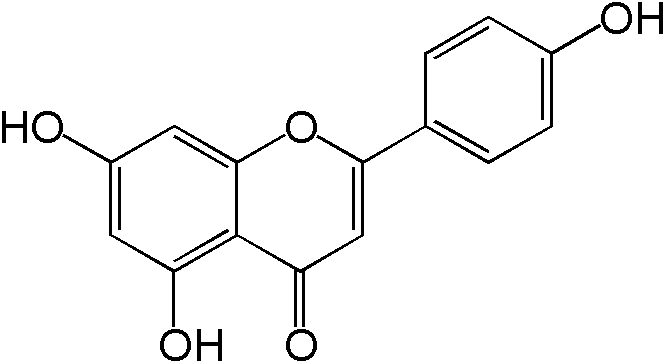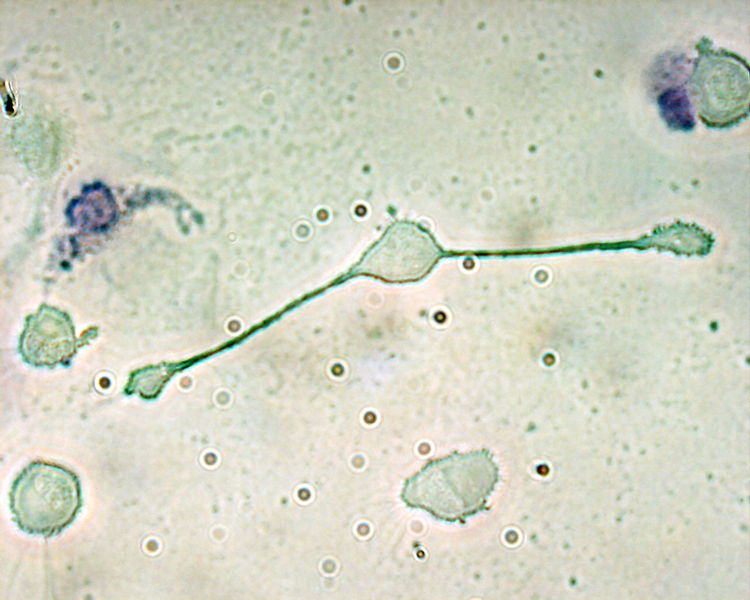Polyphenol antioxidant


Template:WikiDoc Cardiology News Editor-In-Chief: C. Michael Gibson, M.S., M.D. [1]
Please Take Over This Page and Apply to be Editor-In-Chief for this topic: There can be one or more than one Editor-In-Chief. You may also apply to be an Associate Editor-In-Chief of one of the subtopics below. Please mail us [2] to indicate your interest in serving either as an Editor-In-Chief of the entire topic or as an Associate Editor-In-Chief for a subtopic. Please be sure to attach your CV and or biographical sketch.
A polyphenol antioxidant is a type of antioxidant containing a polyphenolic substructure. In human health these compounds, numbering over 4000 distinct species, are thought to be instrumental in combating oxidative stress, a syndrome causative of some neurodegenerative diseases and some cardiovascular diseases.
The main source of polyphenol antioxidants is nutritional, since they are found in a wide array of phytonutrient-bearing foods. For example, most legumes; fruits such as apples, blackberries, blueberries, cantaloupe, cherries, cranberries, grapes, pears, plums, raspberries, and strawberries; and vegetables such as broccoli, cabbage, celery, onion and parsley are rich in polyphenol antioxidants. Red wine, chocolate, green tea, olive oil, bee pollen and many grains are alternative sources. The principal benefit of ingestion of antioxidants seems to stem from the consumption of a wide array of phytonutrients; correspondingly, the role of dietary supplements as a method of realizing these health benefits is the subject of considerable discussion.
Biochemical regulation
The regulation chemistry consists of a polyphenol antioxidant’s ability to scavenge free radicals and up-regulate certain metal chelation reactions. That is to say various reactive oxygen species must be continually removed from cells to maintain healthy metabolic function. Some specific free radicals affected are the reactive oxygen species singlet oxygen, peroxynitrite and hydrogen peroxide. Diminishing the concentrations of reactive oxygen species can have several benefits. Since reactive oxygen species are linked to mobilization of ion transport systems, they are known to have roles in oxidative signalling. In particular, platelets involved in wound repair and blood homeostasis can release reactive oxygen species to recruit platelets to sites of injury. These also provide a link to the adaptive immune system via the recruitment of leukocytes. When polyphenol down-regulate reactive oxygen species formation, they also contribute to improved endothelial health through anti-inflammatory action.
Biological consequences

Occurrence of an abundance of polyphenol antioxidants is associated with several salutary effects in higher animal species:
- Reduction in inflammatory effects such as coronary artery disease[1][2] including specific medical research into the pathways of improved endothelial health via downregulation of oxidative LDL.[3]
- More generally the tea polyphenol (medically known as TP) antioxidant epigallocatechin gallate, has been shown to reduce reactive oxygen species levels in vivo.[4] Reactive oxygen species are important markers for inflammatory diseases.
- Some polyphenol antioxidants, such as resveratrol, inhibit occurrence and/or growth of mammalian tumors.[5]
- A variety of other beneficial health effects have been attributed to consumption of foods rich in polyphenolic antioxidants. Among these salutary effects discussed are anti-aging consequences such as slowing the process of skin wrinkling.[6] For some of the side-benefits (such as prevention of peripheral artery disease), further research is continuing to clarify the role polyphenol antioxidants may have.[7][8]
Difficulty in analyzing effects of specific chemicals

It is inherently difficult to evaluate the medical effects of specific polyphenolic antioxidants, since such a large number of individual compounds may occur even in a single food. For example, over sixty different chemically distinct flavonoids are known to occur in a given red wine. Numerous scientific studies have been conducted to attempt to arrive at one consistent index for food antioxidant power. Since it has been proved that the dietary intake of compounds having antioxidant activity is medically important, various chemical, biological, and electrochemical methods have been proposed to evaluate the antioxidant power of compounds such as polyphenols. Wine, although nonessential, has a high polyphenol content up to two to three grams per liter in red wines obtained by traditional maceration. The polyphenol content of wines is usually evaluated by the Folin-Ciocalteu reagent, which provides an appropriate response to the requirements of wine manufacturers. Statistical least squares analysis has been conducted to demonstrate the Folin method correlates well with alternative chemical and biological procedures for determining antioxidant potential.[9] Therefore, there is some reason to believe more universally accepted protocols may be forthcoming to permit quantitative evaluation of antioxidant strength of polyphenol antioxidant compounds.
Other more detailed chemical research has been conducted elucidating the difficulty of isolating individual polyphenolic antioxidants. Fajardo-Lirai et al. have demonstrated that significant variation in polyphenol content among various brands of tea can explain[10] the inconsistency in previous epidemiological studies that have tried to correlate beneficial health effects of polyphenol antioxidants using specific green tea blends. The Oxygen Radical Absorbance Capacity (ORAC) test is a possible emerging standard by which science measures antioxidant power in foods and dietary supplements
Practical aspects of dietary polyphenol antioxidants

There is debate regarding the total body absorption of dietary intake of polyphenolic compounds. While individual studies seem to demonstrate the favourable health effects of certain specific polyphenols, more research is needed to understand the interactions between a variety of these chemicals acting in concert within the human body. In particular there is evidence that some combinations of foods may inhibit efficient intestinal transfer of certain polyphenol antioxidants; refined sugars, for example, have been shown to impede this uptake under certain circumstances.[11] Furthermore caution should be exercised in attempting diets depending largely on dietary supplements as opposed to a broad array of food sources, since the quality and concentrations of beneficial chemicals in some commercial products is subject to question, given lack of Food and Drug Administration (FDA) regulation.
Topical application of polyphenol antioxidants
There is some data that reactive oxygen species play a role in the process of aging. The skin is exposed to various exogenous sources of oxidative stress, including ultraviolet radiation. These spectral components are generally viewed as responsible for the extrinsic type of skin aging, sometimes termed photo-aging. It has been shown not only that increased levels of protective low molecular weight antioxidants through a diet rich in phytochemicals, but also by direct topical dermal application[12] have proved that a few low molecular weight antioxidants, notably vitamins C and E, ascorbate and tocopherol, as well as lipoic acid, exert protective effects against oxidative stress. However, controlled long-term studies on the efficacy of low molecular weight antioxidants in the prevention or treatment of skin aging in humans is lacking.
References
- ↑ M.F. Muldoon and S.B. Kritchevsky, Flavonoids and heart disease. Brit Med J 312:458-459 (1996)
- ↑ John P. Cooke, The Cardiovascular Cure, Random House Inc., New York (2002) ISBN 0-7679-0881-3
- ↑ Serafini M, Laranjinha JA, Almeida LM, Maiani G, Inhibition of human LDL lipid peroxidation by phenol-rich beverages and their impact on plasma total antioxidant capacity in humans, J Nutr Biochem 2000 Nov;11(11-12):585-590
- ↑ Yuying Mei, Dongzhi We and Jianwen Liu, Reversal of Multidrug Resistance in KB Cells with Tea Polyphenol Antioxidant Capacity, Journal of Cancer Biology and Therapy, Vol: 4 | Issue: 4 | April 2005 | pgs: 468-473
- ↑ M. Jang, L. Cai, G.O. Dean, K.V. Slowing, C.F. Thomas, C.W.W. Beecher , H.H.S. Fong, N.R, Farnsworth, A.D. Kinghorn, R.G. Mehta, R.C. Moon and J.M. Pezzuto, Cancer chemopreventive activity of reseveratrol, a natural product derived from grapes Science 275:218-220 (1997)
- ↑ Vieira O, Escargueil-Blanc I, Meilhac O, Basile JP, Laranjinha J, Almeida L, Salvayre R, Negre-Salvayre, A Effect of dietary phenolic compounds on apoptosis of human cultured endothelial cells induced by oxidized LDL; Br J Pharmacol 1998 Feb; 123(3): 565-73
- ↑ Owen RW, Giacosa A, Hull WE, Haubner R, Spiegelhalder B, Barstch H, The antioxidant/anticancer potential of phenolic compounds isolated from olive oil, Eur J Cancer 2000 Jun;36(10):1235-47
- ↑ Fito M, Covas MI, Lamuela-Raventos RM, Vila J, Torrents L, de la Torre C, Marrugat, Protective effect of olive oil and its phenolic compounds against low density lipoprotein oxidation, J; Lipids 2000 Jun; 35(6): 633-8
- ↑ Oreste V. Brenna and Ella Pagliarini, Department of Food Science and Microbiology, University of Milan, Italy Multivariate Analysis of Antioxidant Power and Polyphenolic Composition in Red Wines, American Chemical Society, July 5, 2001
- ↑ C. Fajardo-Lirai, S. M. Henning, H. W. Lee, V. L. W. Go, and D. Heber,. Department Family Environmental Sciences/Nutrition, Dietetics & Food Science, California State University,, Northridge and, UCLA Center for Human Nutrition, Session 46C, 2002 Annual meeting of Food Expo, Anaheim, Ca
- ↑ Lotito SB, Frei B., Linus Pauling Institute, Oregon State University, Corvallis, Or, Relevance of apple polyphenols as antioxidants in human plasma: contrasting in vitro and in vivo effects Free Radic Biol Med. 2004 Jan 15;36(2):201-11
- ↑ Clin Exp Dermatol. 2001 Oct;26(7):578-82 There is increasing evidence that reactive oxygen species play a pivotal role in the process of aging. The skin, as the outermost barrier of the body, is exposed to various exogenous sources of oxidative stress, in particular UV-irradiation. These are believed to be responsible for the extrinsic type of skin aging, termed photo-aging. It therefore seems possible to increase levels of protective low molecular may produce anti-aging effects on human skin. Indeed, various in vitro and animal studies